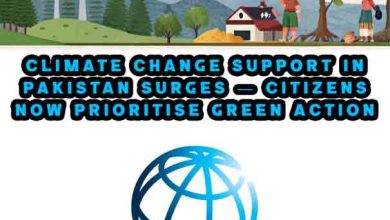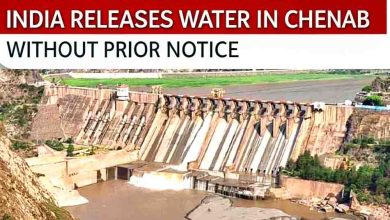Navigating Trade Barriers: Pakistan’s Strategic Response to US Tariffs and EU’s CBAM
Navigating trade barriers like US tariffs and the EU's CBAM, Pakistan must reform customs, regulations, and climate policy to sustain global competitiveness.
Navigating trade barriers has become an essential task for Pakistan as it finds itself wedged between the protectionist stance of the Trump-era tariffs and the climate-focused Carbon Border Adjustment Mechanism (CBAM) introduced by the European Union. Although arising from distinct motivations, both trade policies place similar demands on Pakistan’s outdated trade structure, digital limitations, and environmental compliance capacity.
This article explores the implications of these global trade shifts, identifies shared weaknesses, and proposes actionable reforms that can turn barriers into gateways for sustainable growth.
Understanding the US Trade Barriers
The Trump administration’s protectionist tariffs exposed key structural flaws in Pakistan’s trade ecosystem. As cited in the National Trade Estimate (NTE) Report, Pakistan maintains an average Most-Favoured-Nation applied tariff rate of 10.3%, and a much higher 13% on agricultural imports—well above global averages.
Major US Concerns:
-
Unpredictable Statutory Regulatory Orders (SROs): Frequently issued without proper stakeholder consultation, leading to uncertainty for foreign businesses.
-
Customs valuation inconsistencies: Officials often use arbitrary minimum values rather than transaction-based pricing.
-
Documentation practices: Requirements for physical paperwork increase compliance costs and delay shipment processing.
-
Intellectual Property (IP) enforcement: Weak IP laws contribute to Pakistan’s status as a high-risk trade partner.
Key Insight: These issues have prompted the U.S. to view tariffs not merely as economic tools but as corrective measures against unfair trade practices.
CBAM: Europe’s Climate-Driven Trade Wall
The European Union’s CBAM is not a traditional trade measure but a climate accountability mechanism. Effective from 2026, CBAM targets carbon-intensive imports like:
-
Cement
-
Steel and Iron
-
Aluminium
-
Fertilizers
-
Electricity
-
Hydrogen
CBAM Demands:
-
Accurate carbon content reporting
-
Verified emission data from production to export
-
Digitally-enabled supply chain transparency
Challenge: Pakistan’s fragile digital infrastructure, inconsistent customs valuations, and minimal green manufacturing capability make CBAM compliance a daunting task.
Shared Structural Weaknesses Hindering Progress
Despite different policy motivations, both the U.S. and EU demand similar trade reforms from Pakistan:
-
Transparent and predictable regulatory environment
-
Modernized customs operations
-
Robust digital infrastructure
-
Data transparency and cross-border data flows
-
Legal reforms for investment facilitation
Examples of Overlapping Issues:
-
Customs authorities must verify carbon content under CBAM, but they struggle with basic valuation tasks.
-
The Personal Data Protection Act restricts cross-border data, obstructing both digital trade and carbon tracing.
Reform Synergies: One Path, Two Solutions
The overlap between U.S. and EU demands offers a strategic advantage. Reforms that satisfy U.S. trade partners can also enable CBAM compliance.
Key Reform Areas:
-
SRO Transparency: Public consultation and codified issuance criteria.
-
Customs Modernization: Electronic clearance systems and transaction-based valuation.
-
Digital Uplift: Enhancing internet infrastructure, reducing shutdowns, and facilitating data sharing.
-
Regulatory Predictability: Stable policies to support long-term international investments.
Bonus: These changes will also improve Pakistan’s World Bank Ease of Doing Business ranking, attracting more FDI.
Green CPEC: A Collaborative Compliance Strategy
China, too, faces pressure from the U.S. and EU on trade and climate compliance. As Pakistan’s largest economic partner, China-Pakistan Economic Corridor (CPEC) can be reimagined as a Green CPEC Framework, offering mutual benefits.
Green CPEC Strategy:
-
Low-Carbon Industrial Zones
-
Power CPEC Special Economic Zones with solar, wind, and hydro energy.
-
-
Joint Carbon Accounting Standards
-
Align Pakistani and Chinese supply chains for consistent reporting.
-
-
Technology Transfer Agreements
-
Prioritize clean-tech transfers in future CPEC MOUs and agreements.
-
Outcome: Pakistan becomes a competitive low-carbon manufacturing hub aligned with EU and U.S. expectations.
From Barriers to Bridges: A Roadmap Forward
Instead of viewing these trade barriers as punitive, Pakistan must reframe them as a checklist for reform. Each tariff, regulation, or compliance demand outlines a specific weakness—and therefore, a clear opportunity for correction.
Strategic Actions:
-
Engage in Bilateral Dialogue: Open channels with USTR and EU to clarify reform priorities.
-
Launch National Trade Reform Taskforce: Include commerce, climate, and digital economy ministries.
-
Invest in Green Technology: Offer incentives for eco-friendly industrial upgrades.
-
Digitize Customs and Border Control: Expand NADRA’s reach into trade compliance and blockchain traceability.
Conclusion and Strategic Recommendations
Navigating trade barriers is no longer optional—it is essential to Pakistan’s economic survival and sustainability. The convergence of protectionist and climate-driven trade regimes presents a unique opportunity for structural transformation.
By initiating synchronized reforms across customs, regulatory transparency, digital trade, and environmental compliance, Pakistan can convert challenges into strategic advantages.







